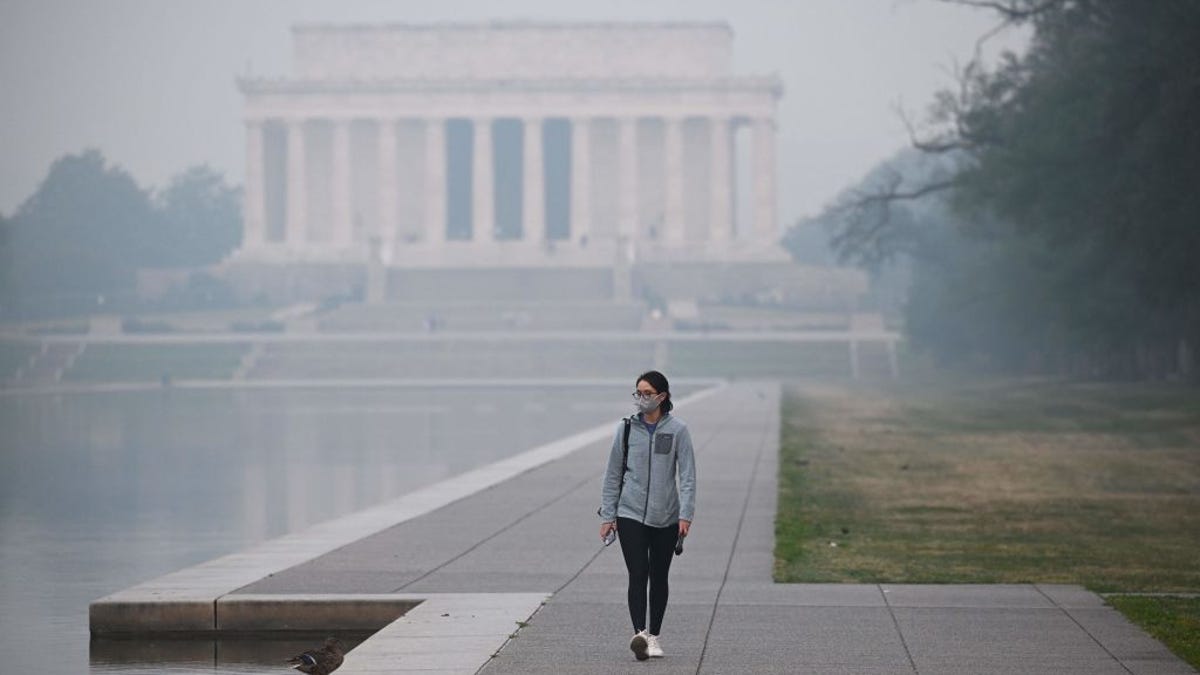It’s a bad time to breathe in some parts of the US right now. With New York City and much of the Northeast in an ominous orange haze and blanket of smoke, air quality is poor due to hundreds of Canadian wildfires that have been raging for several days. These wildfires have triggered air quality alerts across a large portion of the country. Even Charlotte, North Carolina, where I am, was enveloped in a heavy haze yesterday.
But there are some practical and effective steps you can take to protect yourself.
We got in touch with air quality expert Dan Westervelt, who studies air pollution at Columbia University Climate School’s Lamont-Doherty Earth Observatory and acts as an air pollution advisor to the US State Department, to gain insight into how Americans can protect themselves. Here’s what we learned.
How dangerous is poor air quality?
Poor air quality can be dangerous for everyone – but especially for people with existing respiratory issues such as asthma, individuals with lung and heart disease, the elderly and pregnant people.
The New York and mid-Atlantic regions are currently experiencing air pollution about 10 times higher than what health guidelines mark as the healthy levels for exposure. Westervelt said short-term exposure can lead to adverse health conditions such as coughing, sore throat, shortness of breath and stinging in the eyes, while long-term exposure can lead to chronic heart and lung conditions.
Luckily, there are some effective methods you can use to limit exposure and potential side effects.
Tried-and-true ways to protect yourself when air quality is poor
Here are some high-impact steps to protect yourself when facing air pollution from wildfires and beyond, according to Westervelt.
When indoors, you’ll want to:
- Close all windows.
- Turn on your HEPA-filtered air purifier or air conditioner.
- Avoid any activities that generate more pollution such as burning candles and intense cooking. You should also avoid using a gas stove if you have one.
Limiting outdoor time is crucial when air quality is poor, but if you must leave your home, Westervelt suggests avoiding strenuous activity, like jogging or running, that induces heavy breathing and wearing a face mask. He recommends an N95 or K95, though a well-fitting surgical mask can help block the majority of particulate matter.
Is using an air purifier an effective method to clean air?
Though air purifiers became more mainstream during the COVID-19 era, experts are divided on how effective they are. Manufacturers in the US are not allowed to market air purifiers as health products, though CNET’s hands-on testing has shown some to effectively filter harmful substances from the air – especially if they use a HEPA filter.
“For indoor air quality, many air purifiers work well, especially the ones that use high efficiency particulate filters,” according to Westervelt.
He recommends avoiding air purifiers that generate ozone, which will be identified as electrostatic and ionizing air purifiers. The US Environmental Protection Agency (EPA) also warns about the risk of ozone-generating purifiers since ozone molecules can lead to harmful health consequences such as damage to the lungs.
(Learn more about how air purifiers can protect you from wildfire smoke, and other allergens and particles.)
Are there other ways to proactively prepare for poor air quality?
Westervelt says that air quality forecasts can be an accurate read on the air quality index for a given region. He recommended airnow.gov as a real time source for finding air quality data for your city, state or ZIP code.

